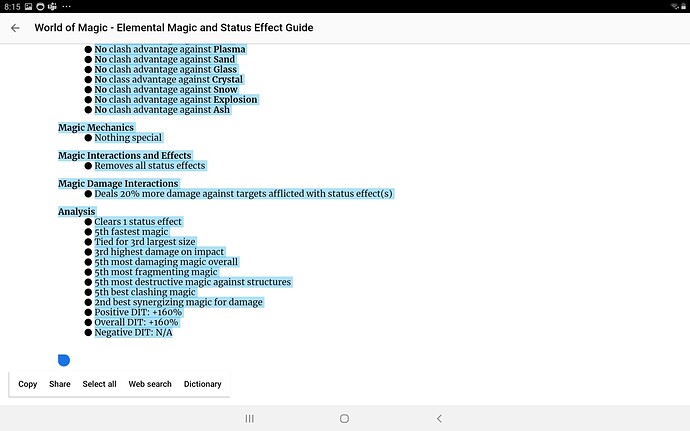I wouldn’t recommend going down that line - tweaking the root, adding more roots or adding extra multiplication/division steps is a form of Cherry Picking. You can torture the data to give you any result, and the more steps you add to “improve” the result the less you’re synthesising a useful statistic and the more you’re just making a tierlist.
Highest Interaction Combo is excellent in this regard - it’s very obvious exactly what it represents, and so it’s easy to see what its flaws are.
It doesn’t account for a magic’s option variety, but that’s ok because it’s not trying to, and that’s clear. Standard SEDIT is good at this for the same reason.
RS SEDIT is a weird middle ground. It’s better than SEDIT at being a “this is how good a magic’s synergy is”, but that’s not what it actually represents. RS SEDIT is the sum total of interactions, weighted by their squares and a couple of 0.5x conditions.
I think it’s simple enough to be ok, but I could see why someone might disagree - it definitely straddles the line of being a magic number instead of something clear that can be understood.
^0.92^0.7^(1/0.7) SEDIT doesn’t really represent anything.
Perhaps it’s a flawless rating for a magic’s interaction potential, but we’ll never know. The system is too complex to judge the desirability of its behaviour - this means it’s impossible to compare it to some other system (say, ^0.94^0.8^(1/0.8) SEDIT) without just saying “this version better fits my subjective view of how interactive the magics are”. It’s little more than a tierlist.
Your issue with gold’s 90% frozen multiplier is a good example here. The fact we’re trying to reduce the impact of gold’s 90% interaction without affecting the rest of the table too much is a good indication we’re tierlisting instead of making a better system.
What exactly is wrong with a 90% interaction? If Shadow had a +90% Soaked interaction, it’d easily be the best synergy payoff magic in the game - it’d certainly deserve to be ranked as one of the most interactive magics.
The real issue with gold’s 90% getting full weighting isn’t that it’s 90%, it’s that it’s a clearing interaction on Frozen - a status which is very hard to apply (combination status interactions only) and very brief (all opponents can clear it within a second).
Rather than reducing the 90% interaction just because it’s 90%, we should reduce it because it’s wildly impractical. How exactly we weight “this interaction is impractical” is a difficult question to answer, but figuring out simple and consistent rules is the game here.
Honestly I figure “0.5x for combo status, 0.5x for clears” is pretty good already. Gold’s frozen interaction is only worth a ~22% interaction in my RS SEDIT calculations - gold is ranked high thanks to its two repeatable 30%s.


